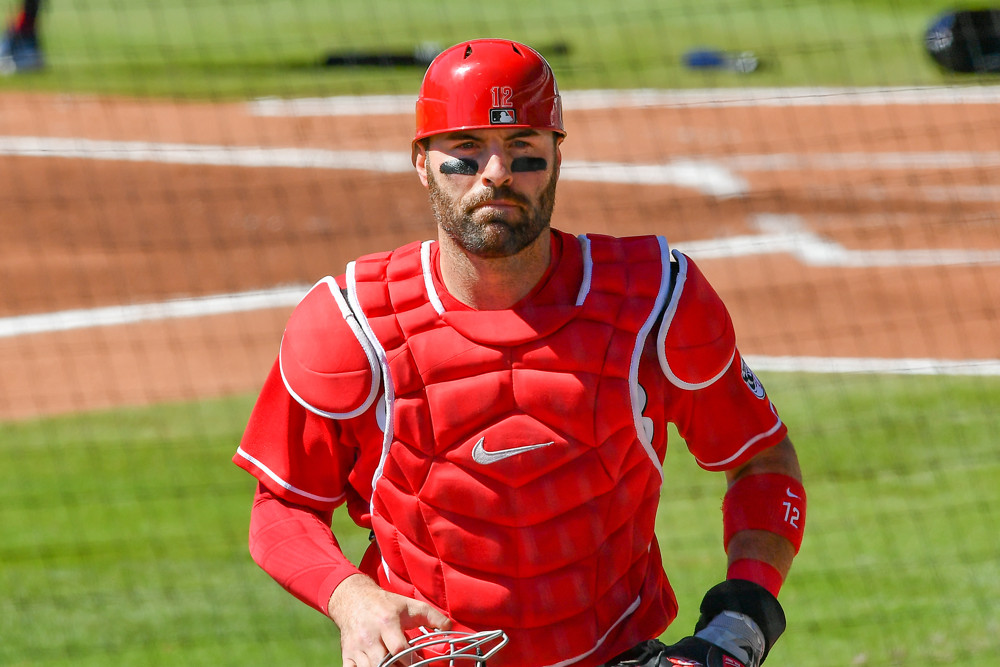
The Reds capped off a busy day on Thursday by signing catcher Curt Casali to a one-year, $3.25 million deal with a mutual option for the 2024 season. The team also designated infielder Mike Moustakas for assignment.
Per MLB.com’s Mark Sheldon, Casali’s base salary in 2023 will be $2.5 million, and he’ll earn a $750,000 buyout if the Reds decline his 2024 option. The contract also comes with a $250,000 bonus if he’s traded, similar to the deal Wil Myers signed earlier in the day.
Casali, of course, previously spent three seasons with the Reds, platooning with Tucker Barnhart to catch one of the top pitching staffs in the league. Casali was non-tendered after the 2020 season and signed with the Giants, where he spent a season-and-a-half before he was dealt to the Mariners ahead of the 2022 trade deadline.
Casali, who turned 34 at the beginning of November, was above league average at the plate (104 wRC+) in his previous stop in Cincinnati, hitting .260/.345/.440 in 485 plate appearances. His offensive production has dipped the last two seasons — hardly surprising for a catcher in his 30s — as he hit just .207/.315/.342 with an 86 wRC+ with the Giants and Mariners.
Defensively, Casali is well-regarded for his ability to call a game and work with pitchers. Just like Barnhart, Casali’s pitch framing improved dramatically while he was with the Reds. Casali ranked in the 35th percentile in Statcast’s catcher framing runs in 2018, his first year with Cincinnati. By 2020, he ranked in the 72nd percentile, and he jumped up to the 79th percentile in his first year with the Giants. Statcast (and FanGraphs) weren’t as impressed with his pitch framing in 2022, however, as he dipped to the 32nd percentile. Casali’s weakest link defensively is his throwing arm. He has a below-average pop time (19th percentile) and he caught just 15% of base-stealers in 2022, 10 percentage points under the league average.
After signing Luke Maile earlier in the offseason, the Reds will plan to carry three catchers on the active roster in 2023. Several years ago, most teams wouldn’t have even considered having more than two catchers on the roster. But now that rosters have expanded to 26 players and teams can no longer have more than 13 pitches, a third catcher is more palatable.
It makes even more sense in the Reds’ situation. Tyler Stephenson played in only 50 games in 2022 due to various injuries, forcing the team to play seven different catchers — most of whom were not major-league quality. Having another catcher will give the Reds much better depth than they had last year. It will also allow the Reds to give Stephenson a break from catching while keeping his bat in the lineup at first base or designated hitter.
Additionally, David Bell can use one of his catchers as a designated hitter with peace of mind in knowing he won’t lose the DH if one of them gets hurt. This situation played out in April, as Stephenson was injured while Aramis Garcia was the DH. With no other catchers on the roster, the Reds had to give up the DH and let starting pitcher Reiver Sanmartin bat.
It will be interesting to see how the playing time works out between Stephenson, Casali, and Maile. Stephenson is clearly the top dog, but will the Reds limit his starts behind the plate at all? And how will they divide up playing time between Casali and Maile? Both are right-handed hitters, so there’s no natural platoon like there was with Casali and Barnhart. Casali is the better hitter against both right-handers and left-handers, while Maile grades out as a better defender when it comes to pitch framing and controlling the running game. When Stephenson needs rest, one possible solution is starting Casali most days and bringing in Maile as a defensive replacement.
We’ll have more on Moustakas in a bit, but the Reds will be on the hook for his full $18 million salary in 2022 — plus a $4 million buyout — unless another team claims him or they work out a trade in the next seven days — both extremely unlikely scenarios.
Featured photo by Rich von Biberstein/Icon Sportswire


